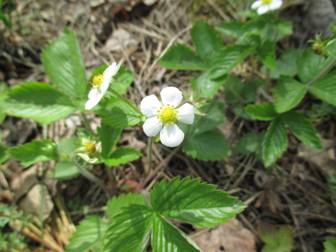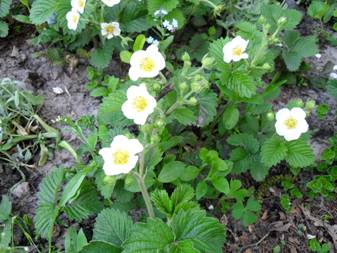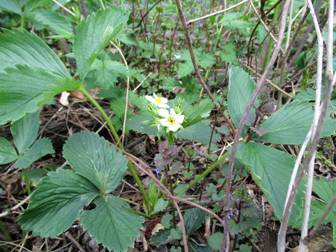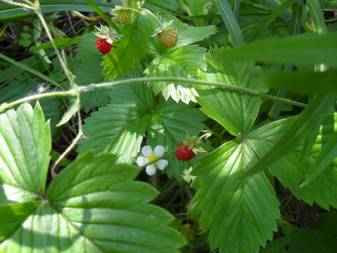




Strawberry (Fragaria), fam. Rosaceae.
Sometimes occurs in the forest, never forming associations, so there is no real hope to gather a significant crop.
And in the city, particularly among the flower beds, we can often see garden strawberries. Their large fruits result from hydridization and selection, and their flowers and leaves are almost identical to wild analogues.
The fruits of both wild and garden strawberries are certainly one of the most beneficial products on our tables. The small wild fruits surpass the domestic due to richer and denser structure, making them less prone to mold. But there is a problem with wholesale production of berries. Those that we see in the markets and stores are, unfortunately, almost always grown using fertilizers and pesticides. Otherwise, their crop would sharply decline or fluctuate for year to year, and everyone who ever tried to grow these berries knows this. We can only hope that some more reliable sources would appear to guarantee ecological safety of the produce, or there is another option – to toil in one's own country cottage garden.
Strawberries are used in folk medicine to treat anemia, as a sudorific and diuretic, a remedy for liver and kidney diseases, lung tuberculosis, insomnia, hypertension, as heart stimulant, metabolic enhancer, and for asthma. Also, strawberries are wonderful supplementary aid against different other diseases, and often included into multi-herb teas. Some people have allergy to strawberries, due to their concentrated fragrance or the irritating effect of the seeds.